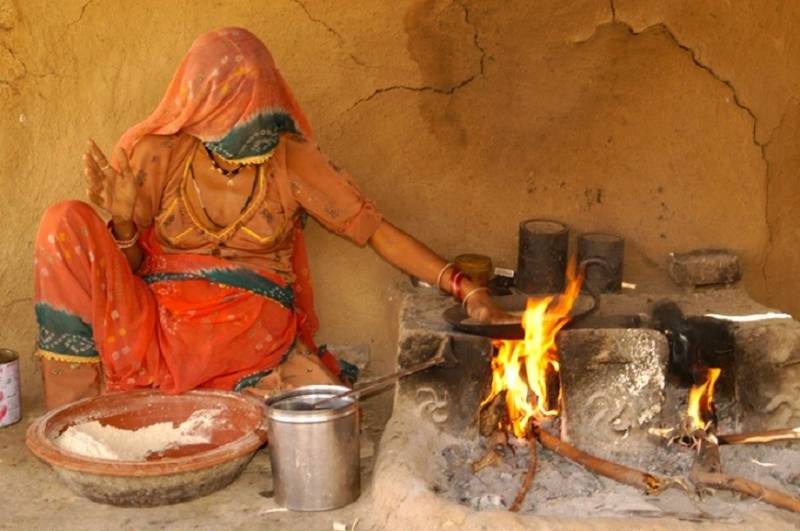Not so Ujjwala: 27% households in rural North India exclusively use LPG, says study
By Aiswarya Sriram
Hyderabad: Ever since its launch in May 2016, the Pradhan Mantri Ujwalla Yojana has been billed as a game changer as it promotes clean cooking fuel. Contrary to claims about its stupendous success, a study has found that only 27 per cent of households in rural North India exclusively use LPG for cooking.
LPG connections in rural households shot from 32 per cent in 2014 to 76 per cent 2018. However, the use of the liquified petroleum gas (LPG) is minimal, accordingly to the study, titled ‘Persistence of Solid Fuel Use in Rural North India’ published in the Economic and Political Weekly Journal.
The study says that in 2018 it surveyed rural households in three districts of Bihar, Uttar Pradesh, Madhya Pradesh and two districts of Rajasthan and adds that these states represent 42 per cent of the Indian population. It found that about 98 per cent of households with LPG connections had a chulha. Of them, 73 per cent preferred chulha over LPG, which meant that only 27 per cent of these households exclusively used LPG.
'Some dishes are better made in chulha'
The survey asked women of the households with chulha and LPG on what they use for specific food items. For baking rotis, around 69 per cent preferred chulha to LPG, while about 61 per cent used LPG to prepare chai. For other food varieties like rice, sabzi and dal, chulha was the first choice. To boil milk, 48.1 per cent lit their gas stove.
| Food Variety | Using LPG in % | Using Chulha in % |
| Roti | 32.1 | 62.5 |
| Rice | 42.4 | 55.3 |
| Sabzi | 39.2 | 58.9 |
| Dal | 44.5 | 55.0 |
| Chai | 61.1 | 36.8 |
| Milk | 48.1 | 49.7 |
Why is chulha preferred even after LPG subsidy?
The survey found that about 37 per cent of respondents used both options, while 36 per cent made everything on chulha.
An element of 'free' drives this tendency, according to the survey. It says that those who used chulha had free access to fossil fuels like cow dung cakes and firewood. Very few had to separately buy fuels for chulhas. The study also says that 60 per cent of households which received LPG through Ujjwala didn’t receive subsidy at all. The research indicates that most of them didn't know about the bank account their subsidy was being transferred to.
Moreover, LPG subsidy under Ujjwala is credited to bank accounts only after the households pay the loan amount that they received from the government for buying a stove. Many of the respondents were unaware of this rule. As the families thought they were not getting LPG subsidies, they chose chulha over gas, says the study
'It's easier to cook with LPG, but we still use chulha'
The survey asked women if they were aware of the health hazards of cooking in chulha. While 69.8 per cent of the women agreed that cooking in gas was cleaner than using coal or wood, 86.4 per cent of them believed that chulha-made food was healthier.
The study also points to the social aspect that women willingly sacrificed their health, believing that they were protecting the health of their children and husband.
The study concludes by saying: “Advertisements currently promote Ujjwala by emphasising benefits to women. Although LPG use benefits women, the advertisements reinforce women’s roles as cooks. Instead, it should promote men’s involvement in household tasks such as cooking, thus accelerating the use of LPG.”